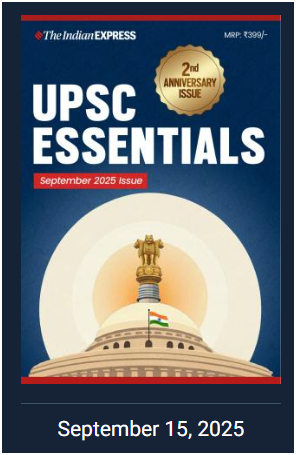© IE Online Media Services Pvt Ltd
Latest Comment
Post Comment
Read Comments
 UPSC often asks tricky questions on profit and loss in its CSAT paper. The downside of such questions is that it might take us a lot of time to solve through traditional methods.
UPSC often asks tricky questions on profit and loss in its CSAT paper. The downside of such questions is that it might take us a lot of time to solve through traditional methods.(Are you preparing for UPSC CSE 2025? You must not ignore the CSAT paper. UPSC Prelims 2024 had a clear message for students that CSAT practice has to be a constant part of preparation. So, UPSC Essentials’ special series ‘UPSC CSAT Simplified’ presents some important topics from the qualifying CSAT paper of UPSC prelims. The aim is to provide you with some tested methods to answer the questions correctly without wasting precious time.)
THE DISCOUNT PROBLEM
Suppose you have gone shopping, and you like a product. We all like discounts on our products. What if it’s the season of festivals and the shopkeeper gives you a discount of 15% followed by a discount of 10%?
Have you ever wondered what your net discount would be in such a scenario? Would it be a 25% total discount or a total discount of 12.5% or none of the above?
UPSC often asks such tricky questions in its CSAT paper. The downside of such questions is that it might take us a lot of time to solve through traditional methods. But the UPSC CSAT paper is all about accuracy with swiftness. So, in this article, let’s try a shortcut to solve such questions with ease.
CASE 1
Let us say a shopkeeper first gives you a discount of 15% and then gives you a discount of 10%. To put it differently, let us say a shopkeeper gives you a successive discount of 15% and 10%, then what would be the net discount rate? Let us calculate it using the shortcut given below.
Let us consider:
We add a minus (-) sign here to depict the discount (i.e. a price reduction). Please note that for this shortcut, we will always use the negative sign whenever a discount is given to us. Putting the values of ‘a’ and ‘b’ in the shortcut we get:
| NET DISCOUNT = -23.5% |
It means that if the shopkeeper gives us a successive discount of 15% followed by a discount of 10%, the net discount over the original price will be 23.5%.
CASE 2
The successive discounts were one part of the business. But when we run a shop, there might be different scenarios that can encounter us. Let us say a shopkeeper is running a toy shop. On one of the toys the shopkeeper makes a profit of 15% and on the other toy he makes a loss of 10%.
Can you tell the net profit or loss of the shopkeeper? It might take us some time and calculation to solve this problem. However, we can use the shortcut used above to solve this problem in no time.
Let us consider:
We have considered the value of ‘a’ with a ‘+’ sign to depict profit and the value of ‘b’ with a minus (-) sign to depict loss. Please note that we always consider profit as positive and loss as negative.
Putting the values of ‘a’ and ‘b’ in the shortcut we get:
| NET = +3.5% |
The positive sign in the net value depicts profit. It means that if the shopkeeper is selling one toy at a profit of 15% and another toy at a loss of 10%, then the net profit will be 3.5%.
CASE 3
On similar lines, let us consider a case where the shopkeeper is making a profit of 10% on one toy and a profit of 5% on another toy. In such a case, since the shopkeeper is making a profit on both the toys, we will consider the values of ‘a’ and ‘b’ as positive:
Putting the value in the shortcut we get:
| NET PROFIT= +15.5% (The + sign depicts profit) |
CASE 4
Let us say, the shopkeeper is making a profit of 10% on one toy and a loss of 10% on another toy. Now if I ask you his net profit or loss, your first instinct would say that he neither made a loss nor made a profit. He just did both the transactions at breakeven. However, your instinct might be wrong. Let us see how!
In the above example:
Putting the values in the shortcut we get the following:
| NET LOSS= -1% i.e. a loss of 1% |
If a shopkeeper sells one product at a loss of 5% and another product at a loss of 20%, then what would be his net loss?
(About our Expert: Mudit Gupta has been a mentor and faculty for the UPSC Civil Services exam for 8 years with expertise in CSAT, Polity, International Relations, and Current Affairs. He is known to break complex concepts into simpler ones that allow UPSC aspirants to develop a grip over the subject matter.)
Subscribe to our UPSC newsletter and stay updated with the news cues from the past week.
The UPSC articles of Indian Express is now on Telegram. Join our Telegram channel- Indian Express UPSC Hub and stay updated with the latest Updates.

Read UPSC Magazine





